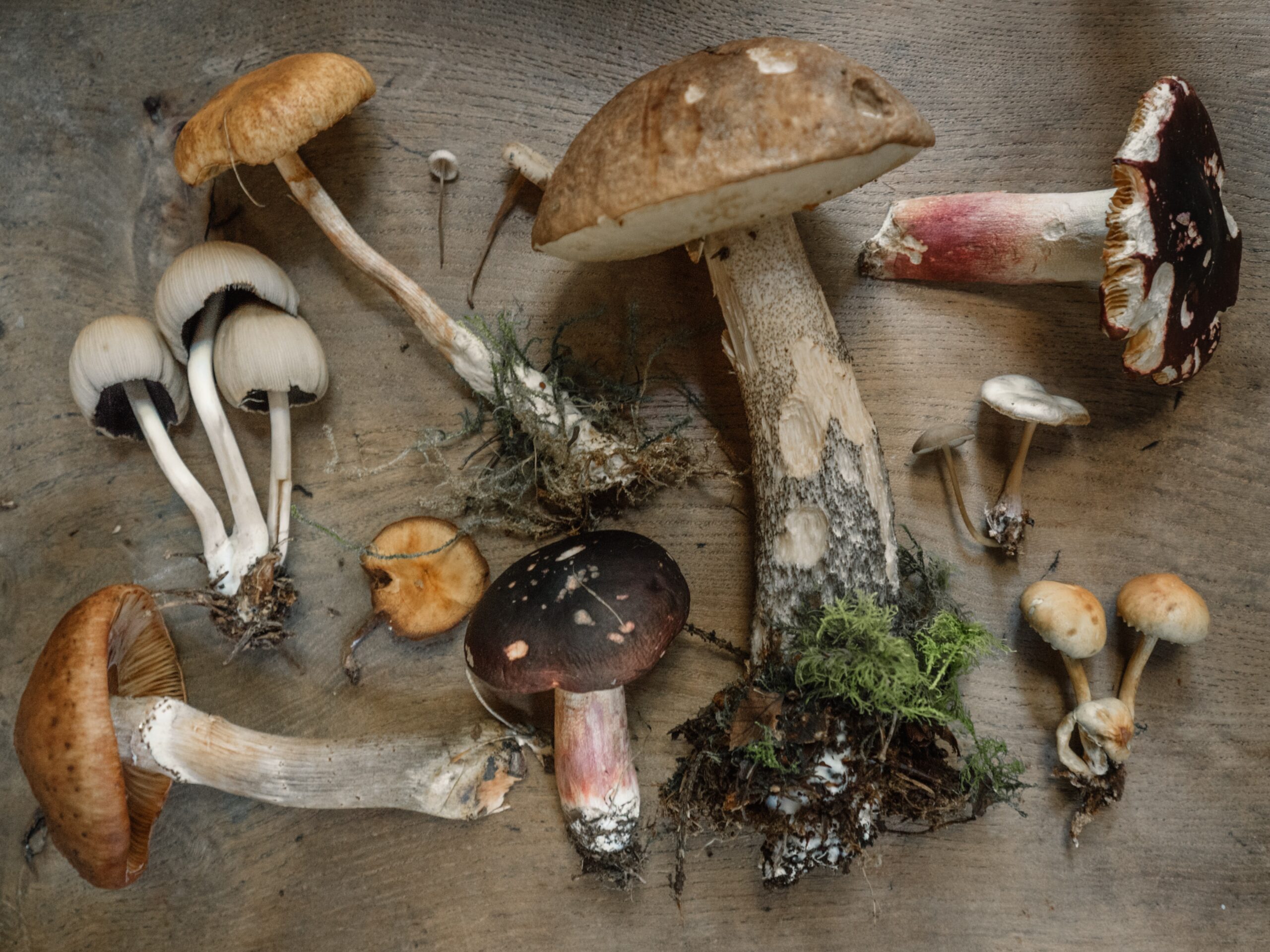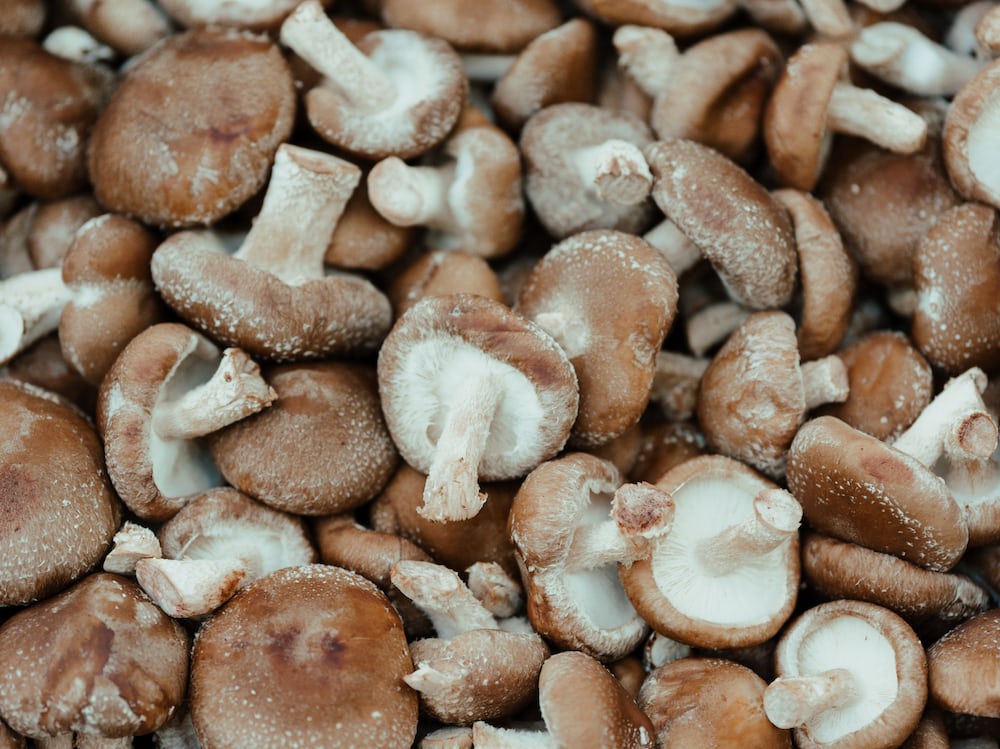
Variety of mushrooms include white button mushrooms, portabello, and shiitake
An often under-appreciated food, mushrooms have been eaten and used as medicine for thousands of years. Traditional and folk medicine practitioners laud the bell-shaped fungi for their healing and cleansing properties. All varieties of mushrooms are low in calories and fat, and contain modest amounts of fiber and various nutrients. Perhaps the more interesting properties of mushrooms are their non-nutritive plant substances—polysaccharides, indoles, polyphenols, and carotenoids in which cell and animal studies have shown antioxidant, anti-inflammatory, and anticancer effects.
Mushrooms are also recognized by chefs for their ability to create savory rich flavors called umami, thanks to the presence of an amino acid called glutamate, which is also found in meats, fish, cheeses, and simmering soups.
Although considered a vegetable, mushrooms are neither a plant nor animal food. They are a type of fungus that contains a substance called ergosterol, similar in structure to cholesterol in animals. Ergosterol can be transformed into vitamin D with exposure to ultraviolet light. Mushrooms vary in appearance with more than 10,000 known types, but generally they are distinguished by a stem, fleshy rounded cap, and gills underneath the cap. China and the U.S. are among the top five producers of mushrooms worldwide.
Are mushrooms a good source of vitamin D?
The quick answer is maybe. Because mushrooms sold in supermarkets are usually grown in dark, controlled environments indoors, they will contain little if any vitamin D. But some manufacturers expose mushrooms to ultraviolet (UV) light to increase their content of vitamin D, either by natural sunlight or a UV lamp. A substance in mushrooms called ergosterol then produces vitamin D2 (ergocalciferol), a form found only found in plants. Vitamin D2 is also added to fortified foods and supplements. The other main form of vitamin D is D3 (cholecalciferol) found in animal foods (egg yolks, oily fish) and supplements. Both will effectively raise blood levels of vitamin D, though D3 may be absorbed slightly better and break down more slowly than D2.
The amount of vitamin D mushrooms contain varies widely and depends on how long the mushrooms are exposed to UV light. Estimates show that fresh wild mushrooms like chanterelles and morels can contain up to 1200 IU of vitamin D per 3.5-ounce serving, whereas mushrooms grown in darkened conditions like white button, shiitake, and oyster contain less than 40 IU. However, button mushrooms that are exposed to sunlight can produce up to 400 IU vitamin D per 3.5-ounce serving though the exact amount depends on factors related to their UV exposure such as the time of day, season, latitude, and duration. Mushrooms treated with UV lamps can produce even higher amounts of vitamin D. Even after harvesting, mushrooms can continue to produce vitamin D, whether exposed to UV light from the sun or a lamp.
Dried mushrooms also contain the vitamin. Some estimates show dried mushrooms to contain about 600 IU of vitamin D2 per 3.5 ounces if stored in dark, cool, dry conditions for up to 6 months (the vitamin may start to break down after that time).
Humidity and cooking mushrooms in water do not appear to affect vitamin D content in mushrooms, but cooking them in fat (such as oils) can cause the vitamin to leach out because it is fat-soluble.
Mushrooms and Health
Edible mushrooms like maitake and shiitake have also been used as medicine throughout history. Other mushrooms that are too tough to eat have been used solely for medicinal purposes such as reishi. Plant chemicals and components in mushrooms may exert antioxidant, anti-inflammatory, and anticancer effects, but the exact mechanism is still unclear and an area of active research. Animal and cell studies show that mushrooms can stimulate the activity of immune cells, macrophages, and free radicals that can stop the growth and spread of tumor cells and cause existing tumor cells to die. Various polysaccharides in mushrooms including beta-glucans are believed to exert these cancer-fighting properties.
There are thousands of varieties of mushrooms, with different colors, shapes, and sizes. Because some wild mushrooms can cause stomach upset or allergic reactions, or may even be poisonous, your safest bet is to stick to supermarket varieties and avoid picking and eating raw wild mushrooms on your own.
The common button mushroom (Agaricus bisporus) is the most common in the U.S. It is the mildest-tasting mushroom and can be eaten raw or cooked.
Other types of mushrooms available for sale include:
Chanterelle: the cap is a wavy golden trumpet-like shape
Cremini (baby bella): a young Portobello mushroom that is dark and firm
Enoki: long, thin white stems with small white caps that are eaten raw or cooked
Maitake: a head that resembles flowering leaves
Morel: the cap is a spongy dimpled oblong shape
Oyster: a fan-shaped delicate cap
Porcini: a reddish-brown rounded cap with a thick cylindrical stem
Portobello: a large brown thick cap with rich juicy flavor that work well as a meat substitute
Shiitake: a dark brown umbrella cap with a thin cream-colored stem
Mushrooms that have been specially treated with UV light may carry a label on the front of the package that says “UV-treated” or “rich in vitamin D,” or display the exact amount of vitamin D they contain.


